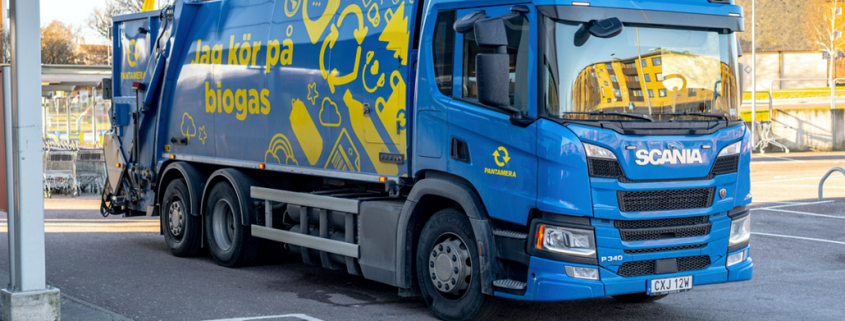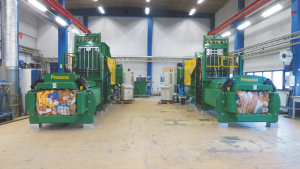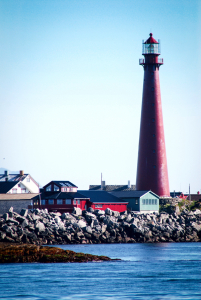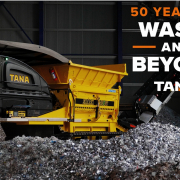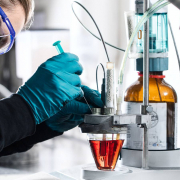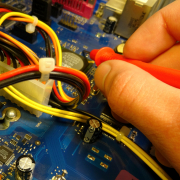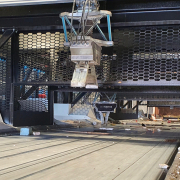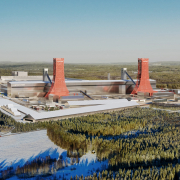How Circular Is Scandanavia’s Waste Recycling Industry?
Scandinavia – especially Norway, Sweden and Finland – made the headline in recycling. “Norway Leading the Way in Plastic Recycling”, “The Swedish Recycling Revolution” or “Finland Aims to Bid Farewell to Rubbish Dumps” showed that something is going on in the north. But are these records in Nordic waste handling sustainable? Are the investments in recycling up to now so effective that they allow us to relax?
NORWAY
On target
In Norway, the course is set. A paper published by Norwegian Retailer’s Environment Fund and others bears the title “Achieving Circularity” and says that the nation’s industry needs to remove avoidable, single-use and hard-to-recycle plastic from the market, should join with governments to help finance improved waste collection and sorting and is asked to “invest in material and business model innovation”. The national government could help “to ensure more economical recycling to attract private sector investment”, whereas the industrial and financial sector “need to map out the waste system to identify recycling stream opportunities and invest in missing technologies locally”.
Batteries: sustainable handling
The call was heard. Since 2021, when Norway became the first country in the world in which half of all new cars sold were electric, it heavily invests in battery recycling. The aluminum producer Norsk Hydro joined the Swedish battery manufacturer Northvolt for a recycling joint venture called Hydro-Volt to operate the first battery recycling plant in Norway and received five million US-Dollar funding. Other companies like Norwegian metal producer Elkem, Vianode, Morrow Batteries, Freyr and Corvus Energy are said to be investing in sustainable battery production too; the research project “Sustainable Materials for the Battery Value Chain” was funded with about 9.8 million Euros by the Norwegian government’s Green Platform initiative. According to the Investment-magazine “Business Norway”, “it is obvious why Norway is becoming a world leader in battery recycling”.
CO2 neutral concrete
But Norway’s industry is interested in managing several other materials. Høine, for example – an active contributor to the “Call for Re-use” in construction – is an Oslo-based company creating a market for recycled tiles in Norway by exclusively offering hand-sorted, CE-marked Danish quality tiles. Høine-CEO Jorunn Tyssø envisages a potential of recycled bricks totaling nearly half a million US-Dollar per year. But unfortunately, re-use in Norway has, so far, been hindered by a too strict interpretation of the regulations. Meanwhile, the government has simplified the rules for re-use and laid the foundations for a greener and more circular construction industry.
To create value from waste, the Norwegian startup Saferock aims to produce fully CO2 neutral concrete by employing by-products. The geopolymer concrete is a type of inorganic polymers consisting of minerals, typically stemming from waste streams from mining industries and power plants. Saferock has raised 3.8 million US-Dollar to finance the first piloting factory. The new factory will use waste materials from the Titania factory in Sokndal. Saferock will receive 1.2 million US-Dollar in grants from Enova, a state enterprise owned by the Ministry of Climate and Environment and mainly financed by the proceeds from the “Fund for Climate, Renewable Energy and Energy Transition”.
Fishing nets and paper: recycled
Snøhetta is based in Hemnesberget, Northern Norway. Together with furniture manufacturer Nordic Comfort Products (NCP), the company has developed a chair with a body made from 100 percent recycled plastic from the local fish farming industry in the North of Norway and a subframe made from recycled steel. The “Resurface Table” edited by Norwegian Trash AS is also made from marine waste from the Norwegian fishing industry; the project is receiving funding from the Norwegian Research Council to give a second life to plastic products in the form of furniture.
According to “Business Norway”, the paper recycling plant run by Norsk Gjenvinning and technology company Bulk Handling Systems can recycle paper at 99.5 percent material purity that can compete with virgin raw materials. The NG Group manages 2.5 million tons of waste per year, at a recycling and recovery rate of 98 percent, of which 60 percent is recovered as new raw materials. The system was laid out to process 20 tons per hour, and three shifts to process approximately 120,000 tons annually.
Investing in harbor and ship recycling
Not to be forgotten amongst the circular oriented companies is Scanship AS, that was awarded a total of about 1.8 million for the building of a new plant to further commercialize its patented pyrolysis technology for chemical recycling of plastic waste. Worth mentioning is also Norway’s first AI-powered robotic sorting station supplied by ZenRobotics featuring robotic arms that will perform up to 6,000 picks per hour to sort several fractions from industrial waste with a total capacity of 150,000 tons per year. By the way: Norway’s deposit return scheme is the world’s recycling role model and one of the most efficient, says recycling technique producer Tomra. Last but not least: Circular Norway, together with the consultancy company Vill Energi, not only assisted Narvik harbor with circular investment in developing a circular ecosystem and action plans for circular projects until 2040. Moreover, Norway has also expressed interest in investing in Bangladesh’s ship recycling business, which has already set a February 2023 target to modernize and green all of the country’s shipbreaking facilities, Invest Bangladesh signaled in 2020.
Circularity starting up
The Circularity Startup Index run by the Ellen Mac Arthur Foundation shows, amongst others, Packoorang presenting reusable packaging for different industries made of recycled polyester. Grin wants to develop smart, cost-effective, and safe return and collection systems. And Empower uses digitization, cloud-data and block chain technology to store and facilitate seamless information sharing about plastic waste and map waste flows.
Developing a circular economy
In this spirit, the Norwegian Center for Circular Economy – a development center for industry, business and public enterprises, which sees business opportunities in the circular economy and the green shift – is willing to “contribute to increased value creation and growth for companies, long-term competitiveness and the achievement of important climate and environmental goals”. It wants to help develop new, circular business models for new value chains and markets for waste and side streams and new technology for increased circular economy and material recycling. Likewise, the Norwegian government declares in its “strategy for developing a green, circular economy” the purpose “to support the Norwegian industrial sector in making use of opportunities to enhance its green competitiveness in a circular economy”. To use legislation and targeted initiatives to enhance circularity in building construction and operation. And “to make use of local and regional resources and industry structures throughout the country in developing a circular economy”.
SWEDEN
Reputation in decarbonization
The latest Circularity Report gives Sweden the best marks: “Sweden’s reputation as a global leader in decarbonization is well known: it’s the first country in the world to introduce carbon pricing, and currently boasts the highest carbon price – both factors that have contributed to its relatively low-emissions society.” And according to the journalistic platform Innovation Origins, Sweden plans to spend 13.8 billion Swedish Krona (1.3 billion Euro) on energy transition of which 270 million Euro are destined for the industrial sector, 500 million Euro for climate change, 375 million Euro for energy savings in the building sector and 140 million Euro investment in railroads.
Not only plastic recycling …
Therefore, the Swedish industry is investing. Last year, Swedish Plastic Recycling (Svensk Plaståtervinning), for instance, started investing one billion Swedish Krona (96 million US-Dollar) in building “the world’s largest and most modern facility for plastic recycling” called Site Zero. The Swedish Environmental Protection Agency (Naturvårdsverket) contributed funding of just over 180 million Swedish Krona (17 million US-Dollar) via its climate investment aid program known as Klimatklivet. Until its estimated completion in 2025, the facility will have a reception capacity of 200,000 tons of plastic packaging per year and is said to be climate neutral with zero emissions. In 2021, the European Investment Bank (EIB) signed a loan agreement of up to 311 million Swedish Krona (30 million US-Dollar) with textile producer Renewcell to “boost circularity in the fashion industry”. Renewcell will produce Circulose, one or even the only commercially available textile-to-textile recycled material of virgin equivalent quality. For 2024, Renewcell and the Chinese viscose manufacturer Tangshan Sanyou announced a partnership for producing viscose fibers made from 100 percent recycled textiles in commercial quantities.
… but also efficient battery treatment
Stena Recycling and Stena Technoworld have created an efficient industrial facility for recycling more material from the industry, hundreds of cars and other waste from the society. The so-called Stena Nordic Recycling Center – together with Swedish car dismantlers – is sure to achieve the EU’s requirement for 95 percent recycling rates for scrapped cars, “without having to send materials long distances for further processing”. In 2022, Stena Recycling announced the establishment of seven new battery centers across Europe, where industrial batteries will be safely collected, discharged, and dismantled. More than that, the company even received a 70.7 million Swedish Krona (7.6 million US-Dollar) investment from the government power regulator Swedish Energy Agency to build a 10,000 tons-per-year lithium-ion battery recycling plant.
The aim: Recycle 95 percent of a lithium-ion battery used in electric vehicles and treat batteries from smart devices, power tools, domestic appliances and other electronic products. A project benefiting from the Swedish transition funds was called Hybrit (Hydrogen Breakthrough Ironmaking Technology). The consortium of the SSAB steel producer, the LKAB mining company and the state energy company Vattenfall has set themselves the goal of reducing iron ore by using fossil-free hydrogen and thus receiving sustainable steel by producing water as a residual.
Some ambitious policies
And then there is Nefco, in its own words “an international financial institution that finances the initial scale-up of Nordic green solutions on international markets”, founded in 1990 by the five Nordic countries and taking “concrete actions to accelerate the green transition aligned”. Nefco confirms that Sweden has “some of the most ambitious green-economy policies in the world” and certifies it as an “origin country of a great number of sustainable growth companies and technologies”. Nefco’s portfolio in Sweden includes several other circular solutions. For example, the textile company Coloreel developed a technology for automated on-demand coloring of single recycled polyester threads. Scandinavian Enviro Systems recovers valuable resources from waste tires by patented pyrolysis processing. Elonroad designed a charging technology for electric cars. NOAQ Flood Protection delivers water-retarding barriers instead of sandbags. A company named Baseload generates electricity from waste as well as geothermal heat and expands its knowledge of energy production globally.
Private investment in decarbonizing
According to the Innovation Origins platform, Sweden is investing the corona millions primarily in projects such as manufacturing green steel and recycling batteries and accumulators. And there is some more private investment in decarbonizing the country. The Verdane Foundation, for example, provides donations, financial support and makes selective investments focusing on climate change, such as Bower and Katapult Ocean: Bower is a deposit solution for all packages or products running a “world-unique position-based scanning technology”, while Katapult Ocean’s portfolio companies are representing “the vanguard of impact ocean tech and the greatest opportunity for investment”.
Blq Fund is an early-stage venture capital fund, investing in operating in tech and innovation and focusing on start-up companies and entrepreneurs in tech companies. Almi Invest, in its own words, provides venture capital for early-stage, emerging companies with high growth potential and a scalable business concept presented in the four main sectors technology, life science, industry and cleantech. And finally, Circular Sweden must be named: a corporate forum that aims to drive technological development, consumer behavior and policy forward in circular design, sustainable consumption, increased access to and utilization of recycled materials, and circular value chains. Among its members that have the opportunity to influence material flows or who are engaged in ambitious efforts to implement circularity are Coca-Cola Europacific Partners, Electrolux, H&M, Houdini, IKEA, NCC, White Arkitekter and the Recycling Industries.
In good condition
With the different funding and an official Swedish policy backing the deployment, Sweden’s recycling management, seems to be in good condition. It sends less than one percent of its waste to landfills. And the nonprofit online magazine “Reasons to be Cheerful” balances “that between recycled solid waste and composted organic matter, Sweden recycles nearly half of what it throws away”.
FINLAND
World’s first national CE road map
Under the leadership of the Finnish Innovation Fund called Sitra, Finland, in 2016, prepared a national road map to a circular economy – the world’s first one. A newer version updates Finland’s plans to reform its economic model to ensure successful sustainability and aims at reaching four strategic cross-sectoral goals. It envisages the renewal of the foundations of competitiveness and an economic growth strategy. Moreover, it punts on transfer to low-carbon energy including its efficient use. Furthermore, it underlines that natural resources should be regarded as scarcities. And it relies on everyday decisions and choices as a driving force for change.
A golden opportunity
In October 2021, Finland received 2.1 billion Euro in grants from the European Commission to realize its recovery and resilience plan and to support the implementation of the intended crucial investment and reform measures. Some will be distributed by the Business Finland – a Finnish public-sector organization offering innovation funding and internationalization services. That – says the online-magazine “Baltic Industry” – will “accelerate the re-use and recycling of industrial by-products and waste streams (e.g. bio economy) as well as other key materials (e.g. plastics, textiles, packaging, electrical and electronic equipment, construction and demolition materials)”. Sitra, the Finnish Innovation Fund, is sure that “rather than offering products, the foundation for earnings will be services, the recycling of products and intelligence-based digital solutions. Finland has a golden opportunity to become a pioneer and shift the focus of competitiveness to a carbon-neutral circular economy and low-emission solutions.”
A pilot factory for leather waste
Recycling, at any rate, has found its way in a range of industrial branches. The textile sector delivers the best example. Finland-based Spinnova has developed breakthrough technology for making textile fiber of wood or waste, such as leather, textile or agricultural waste, without harmful chemicals. Together with KT Trading, the company was building a pilot factory in 2021 for fiber production out of leather waste, a material that can easily be repaired or is entirely biodegradable and recyclable.
The production process is said to create zero waste and side streams or microplastics as well as to avoid harmful chemicals, and its CO2 emissions and water use are minimal. Meanwhile, Spinnova has received several awards, and the German sportswear giant Adidas invested 3.6 million US-Dollar in the textile-recycling firm.
For a nationwide textile recycling
In 2022, the PCAW reported that Lounais-Suomen Jätehuolto (LSJH) received a “circular economy investment aid for building a full-scale end-of-life textile refinement plant”. LSJH runs post-consumer textile collection and recycling points in Southwest Finland. Its new responsibility comprises sorting into different material types to be reused or mechanically processed into recycling fiber. And Espoo-based Infinited Fiber not only invested heavily in a commercial-scale factory for a recycling technology to produce a cotton-like premium quality textile fiber called Infinna. The enterprise also initiated the New Cotton Project – an EU consortium project together with partners like Adidas, Aalto University, Fashion for Good, Frankenhuis, H&M group, Inovfil, Kipas Textiles, REvolve Waste, Rise, Tekstina and Xamk. The aim: Collect, sort, regenerate and later re-collect textile waste into Infinited Fiber’s cellulose-based textile fibers for different types of fabrics for clothing. The New Cotton Project has received 6.7 million Euro in funding from the European Union’s Horizon 2020 program. According to the Professional Clothing Industry Association Worldwide, Finland could get “the first country in the world where post-consumer textiles are obtained nationwide for reuse and recycling”.
Treatment of batteries and paper
Energy supplier Fortum sees its role in finding solutions for its customers’ environmental and waste challenges to enable the circularity of materials. The company is engaged in the recycling of plastic, ash, metal and batteries: “Our low-CO2 battery recycling solution makes it possible to recycle over 80 percent of the battery, and 95 percent of the valuable metals contained in the battery’s black mass can be put back into circulation.” In 2021, Fortum decided to invest 24 million Euro in a new state-of-the-art hydrometallurgical plant to start in the second quarter of 2023. With this expansion of the recycling capacity, the company “will help to ease the raw materials gap the European automotive industry is facing”.
The three paper machines of the Sappi Kirkniemi Mill produce 750,000 tons per annum of high-quality coated mechanical paper tailored to high-quality publishing and advertising end uses and 300,000 tons per annum of bleached mechanical pulp for its consumption. In 2021, the company invested in reducing the mill’s direct fossil greenhouse gas emissions by about 90 percent – equal to 230,000 tons of carbon dioxide annually. By the completion in early 2023 and following Sappi Europe’s decarbonization roadmap, biomass will then be used as a fuel type instead of coal.
Engaged in glass
Concerning collecting and recycling packaging and flat glass and producing form glass from by-products, Uusioaines Oy is called the “leading player in Finland”. It is characterized by “long-standing relationships with recyclable glass suppliers and a well-functioning processing plant with experienced professionals”. This evaluation derives from Finland-based investment company Partnera Oy and state-owned Finnish Industry Investment Oy. Already in 2018, both companies transacted 19.8 million Euro to Uusioaines, while MCF Corporate Finance helped to “facilitate the deal with a proven track record in circular economy transaction”.
Leading in steel- and aluminum-recycling
Kuusakoski calls itself “Northern Europe’s leading recycling services company”, based on competence with materials, recycling and environmental technology. It aims to “restore value to waste material by collecting, processing, and upgrading it into a new raw material”. Lately, the company planned a 25 million Euro investment in a carbon-free steel recycling plant in Veitsiluoto to increase the company’s annual recycling capacity of metal-containing waste by 150 thousand tons, or 25 percent.
In February 2023, Kuusakoski announced the building of a new composite plant for shredding and treating “composites safely and effectively” in Southern Finland with a total value of four million Euro. In the same month, the company published the plan to invest 25 million Euro in a new production line at the company’s recycling plant in Heinola, so that – for example – “the production of recycled aluminum will, for the first time, exceed that of primary aluminum”. And in October 2022, seven million Euro were provided for a facility to effectively process copper and aluminum-containing cables and wires and separate the metals. According to Kuusakoski, these and other measures are “part of the multi-year investment program which aims to increase capacity, enhance material yield and deliver cleaner end products – recycled raw materials”.
Start-ups in packaging material
The Circular Startup Index of the Ellen MacArthur Foundation on Finland contains Spinnova and comprises RePack with its reusable and returnable packaging services for e-commerce. Kamupak’s mission is to reduce the world’s waste load with a digital deposit system for reusable takeaway packaging. Plafco Fibertech Oy provides processing technology to transfer paper to all cellulosic composite – with a material that is fully biodegradable, bio-based and can be recycled in existing paper loops.
SCANDINAVIA
One of its general faults: Incineration
In 2019, Eunomia, which called itself an independent consultancy for sustainability, published an “Analysis of Nordic regulatory framework and its effect on waste prevention and recycling in the region”. The study offered data on treatment routes and recycling rates of the before-mentioned Scandinavian countries. So, it showed that Norway’s total waste generation and recycling rate of waste remained relatively unchanged since 2008 between 50 and 55 percent, but stagnated in recent years and even decreased slightly between 2016 and 2017. Although being “a world leader in the development and application of recycling and sorting technologies”, the country incinerated and used thermally about 100,000 tons i.e. 40 percent of its household waste. For Sweden, the study determined a recycling rate since 2006 in the high 40s, followed by a stagnating quota between 45 and 50 percent since 2008 and 48.9 percent in 2016. The landfilling volume was reduced from former 1.5 million tons to zero, but incineration needed permanently more than two million tons – roundabout half – of the household waste. The Swedish Waste Management Association in 2020 spoke of nearly 50 percent being turned into energy. Since 2000, Finland’s dry recycling tonnage amounted to between 60.000 and 80.000 tons, while the incineration volume rose from about 10,000 to 150,000 tons – reaching nearly half of all household waste.
Norway: Harsh competition for incineration
“Norway leads the way in turning waste to energy”, “The Guardian” wrote in 2014. And added that the land “is importing as much rubbish as it can get its hands on”. Since the ban on landfills from 2009, the country invested in modern waste-to-energy incineration plants. The Klemetsrud incineration plant in Oslo turns waste into heat for 60,000 homes in about 340,000 households. In 2010, Sweden and Norway went “in harsh competition for the incineration of waste”, WtERT Germany gave account. In 2015, Sweden began with “building a lot of waste incinerators, and they are now competing in the Norwegian market”, the Deutsche Welle cited Jannicke Gerner Bjerkås from the Klemetsrud plant. Consequently, hundreds of large trucks carried Norwegian waste to Sweden. Following data from Statistics Norway, the national waste incineration sank from 1,683,000 tons in 2017 to 1,470,000 tons in 2021. In 2021, Fortum, running the Klemetsrud plant, published plans to make it the world’s first waste-to-energy plant with full-scale CCS-technology.
Sweden: Overcapacity for incineration
Concerning Sweden, Hanna Salmenperä not only found out that between 2018 and 2023 the Swedish import of waste for incineration “increased substantially”, but also stated that the country “currently has overcapacity for incineration”. Another source underlines that nearly half of the country’s non-recycled waste is burned and transferred to power or heat. The Zero Waste Europe organization criticizes that the “increased focus on incineration over the years has brought about stagnation in recycling rates since 2006” and the recycling average of 33 percent of total municipal solid waste is still a way away from the European Commission’s common EU MSW recycling target of 65 percent by 2030.
Finland: Mixed waste exported
In an investigation of “different pathways to a recycling society”, conducted by Hanna Salmenperä from the Finnish Environment Institute, the author determined that there is still some need for more incineration capacity, as mixed waste is exported for energy recovery to neighboring countries. According to Eunomia, there were nine waste incineration plants in operation in 2015, burning municipal waste and waste from other sources. Additionally, Finland runs 25 plants licensed for co-incineration for separated wastes from industry, commerce and municipalities. And 73 power plants used industrial by-products and wastes from in-company circulation in addition to conventional fuels, not to forget one high-temperature incineration plant for hazardous waste.
Recycling must be increased
It was only consequent that Eunomia published an article postulating “Nordic region must increase recycling”. The proposals in detail included: more attractive economics of recycling, dramatic increase in recycling collection coverage from households and businesses, leverage of additional taxation measures and significant shift away from incineration towards recycling. The consultancy, with a view on the new EU target of 65 percent by 2035, pleaded for an increase in recycling between 16 to 32 percent.
Broad support to a shift
No doubt that Scandinavia is highly interested in a transition to a circular economy; science, technology and stakeholder offer support. The Nordic Working Group for Circular Economy (NCE) – a merger of the Nordic Waste Group (NAG) and the Working Group for Sustainable Consumption and Production (HKP) – was set up in 2019. The group’s priorities want to improve work on product design and communicate products’ environmental characteristics in the market. The Nordic Circular Economy Playbook wants to enable circular business advantage and circular business models to reach “new levels of efficiency through technology and digitalization”.
Promoting knowledge input, CIRCit – the Circular Economy Integration in the Nordic Industry for enhanced sustainability and competitiveness – wants to develop and deliver science-based tools and approaches. The scientific research project defines itself as “a promising approach towards maximizing value by increasing resource productivity, enhancing energy efficiency, lowering resource consumption and decreasing waste” to establish the Nordic Industry “as a benchmark in the field”. Another program for “Nordic Green Growth Research and Innovation” saw the funding of 6.2 million Euro through NordForsk, Nordic Innovation and Nordic Energy Research. The Nordic Sustainable Construction program’s purpose is to establish the Nordic Region as a leader in sustainable and competitive construction and facilitate the green transition in the Nordic construction industry.
Circularity gaps of more than 96 percent
It will take much more effort to make the Nordic economy circular. At least for Norway and Sweden, Circularity Gap Reports have been published that prove a national circularity rate of 2.4 percent for the first and 3.4 percent for the second country. Both are below the global average of 8.6 percent leaving circularity gaps of more than 97 and 96 percent.
“Norway consumes 235 million tons of materials – metals, fossil fuels, biomass and minerals – to fuel its societal needs each year. 97.6 percent of these materials are never cycled back into the economy”, the report released in 2022 recapitulates. The private sector – subsidized by the national government – can contribute to a better economic recycling. The “Achieving Circularity” paper explains, that this could be realized through benefit schemes for recycling plants. Through financial incentives for the use of recycled content. Through disincentives for the use of virgin material. Or through disincentives for the inset of plastic into waste-to-energy-incineration.
The other report substantiated the circularity rate with the fact that the vast majority of resources Sweden uses to satisfy its needs and wants come from virgin sources. The paper comprises of elements including 40 percent stocked material like buildings and infrastructure and around 36 percent of materials like biomass with the potential for end-of-life recycling. Non-circular flows such as fossil fuels and non-renewable inputs represent approximately 20 percent of the gap.
Enough work
So, there is enough work to make Sweden’s economy circular or – to say it with the words of the national strategy – in “becoming the world’s first fossil-free nation in the world”. That – says the Circularity Report on Sweden – could be reached by shifting to a circular housing and infrastructure sector (material consumption reduced by 8.2 percent), by cultivating a more wholesome food system (material consumption reduced by 7.3 percent), by backing material efficiency and new business models in the manufacturing sector (material consumption reduced by 5.3 percent), by reshaping the extractive industries like mining, quarrying, biomass extraction and fishing (material consumption reduced by 3.4 percent), by driving clean mobility forward (material consumption reduced by 3.5 percent) and by designing conscious consumables (material consumption reduced by 4.5 percent).
(Published in GLOBAL RECYCLING Magazine 2/2023, Page 22, Photo: Trygve / stock.adobe.com)

